Spitfire MK VB "City of Winnipeg"
This aircraft was a part of 402 (Canadian) Squadron, based at Horne, England during 1942. It is named for the City of Winnipaeg, Canada which probably donated funds for it's manufacture.
The kit is Tamiya's 1/48 and was made out of the box with the exception of Areo Master decals. In my opinion, not being a true Spitfire expert, this is one of the finest kits of this MK to build.
I have no information on the pilot or pilots of this aircraft.

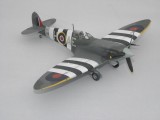
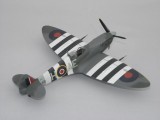



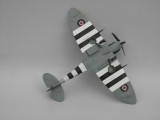
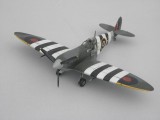

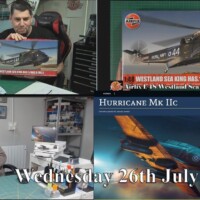
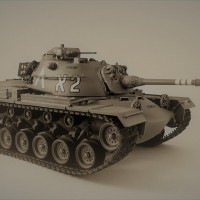
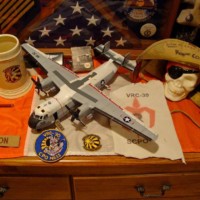
That is a real nice Spit.
OK Frank, make that a double shot. Great job on the spit...nicely done in "formal" stripe attire!
Super clean build, the strips are well placed and finished. Really a nice job!
Hi Frank, you are right about the sponsorships. It is not just the individual aircraft but the squadron that was adopted. There were a lot of RCAF squadrons with city names. I want to make a model Spitfire from 417 Squadron RCAF. It is the "City of Windsor" squadron, my home town in Ontario, Canada. It was the only RCAF squadron to serve in the Mediterranean theatre.
A look through some sources shows the plane AB910 is part of the Battle of Britain Memorial Flight. Robert Bracken, the author of "Spitfire: The Canadians" has a picture of the restored aircraft in those markings in the back of the book. He helped research the restoration. I believe it is different squadron markings now.
http://www.raf.mod.uk/bbmf/theaircraft/spitfireab910.cfm
That plane in those markings was flown during the D-Day invasion by George Boyd "Geordie" Lawson. The website Flying for Your Life has a short bio of him with a picture of him stepping into the cockpit.
http://flyingforyourlife.com/pilots/ww2/l/lawson/
This is from the history of the squadron:
"In March 1942 the Squadron resumed its fighter role moving to Colerne and converting to Spitfire Mk Vb's. Cross-Channel sorties from various bases followed, notably Kenley and Redhill until August when it received Spitfire Mk IX's, employing these over Dieppe on the 19th of August. A move to Digby in March 1943 brought a return to Spitfire Mk V's, which were flown from a variety of airfields right up to and during the Normandy invasion, when it operated from Horne, Westhampnett and Merston, mainly in a fighter-bomber role."
Alan,
Thank you so much for the info. I have put it in my file to save and to read thouroghly later. Great info. Happy New Year to you and yours.
No problem Frank. It really was a pleasure to learn that myself. Happy New Year to you and yours as well. Happy modelling in 2014!
Hi Allen, Great history on both this Spit and the Typhoon that Frank posted. Of interest to me on the photo of Boyd stepping into his AC are the missing pry bar on the door and the hard demarcation line separating the upper green/drk sea grey colors. Thanks again for the great history review. Have a Great New Year
Happy New Year to you as well, Erich!
Very nice! Interesting the invasion stripes, were they also used at Dieppe? As I recall from the books, Dieppe was the first time the MkV's encountered the Fw190, and realised they were being outflown. Hence the MkIX was rushed into service.
James,
I have to bow to any greater expert on Spits than I am. I am not that up to date on all of it's MK's or uses. I am just a person that absolutely loves the Spitfire.
Nicely done Frank. a great looking Spitfire.
Further more to what Alan said, Westhamnett was a satellite staion for Tangmere.
Home base for a while of the famous Douglas Bader aswell as many other sqns.
Simon,
Good info to know. Thank you.
WOW ! That's all, Frank, Just WOW !
Very interesting Alan, as I remember Johhnie Johnsons in his memoir "Wing Leader" talks of encountering a Fw190 for the first time flying CAS for the Dieppe raid in a MkV and nearly got shot down, only escaping by flying past a Royal Navy ship that was shooting at everything, this frightend the Fw190 pilot off his tail. I was amazed to hear this Canadian unit already had MkIX's at Dieppe. Ontop of that giving up the IX's to go back to the V, for D-Day, must have severely tested morale! Very interesting.
Frank, I can only say that it's a very nice looking model of a Spitfire. Happy new year.
looks terrific